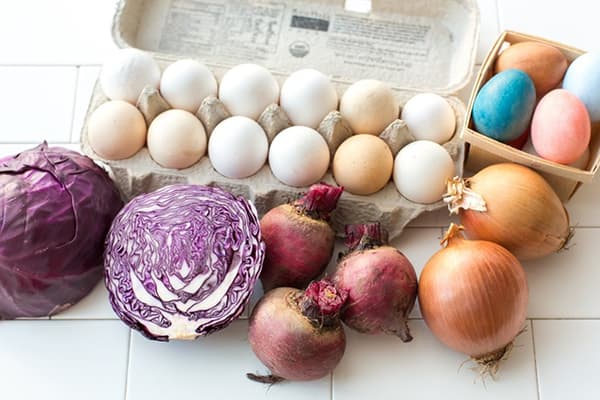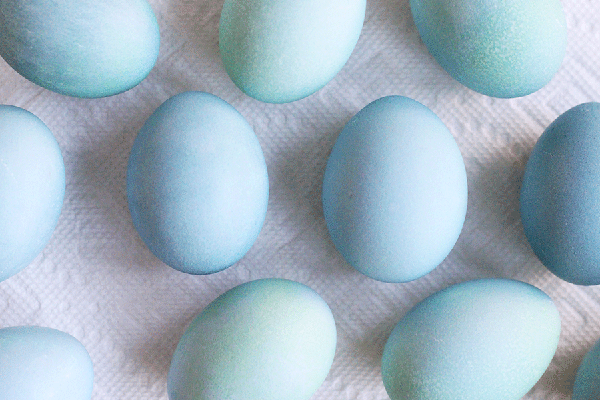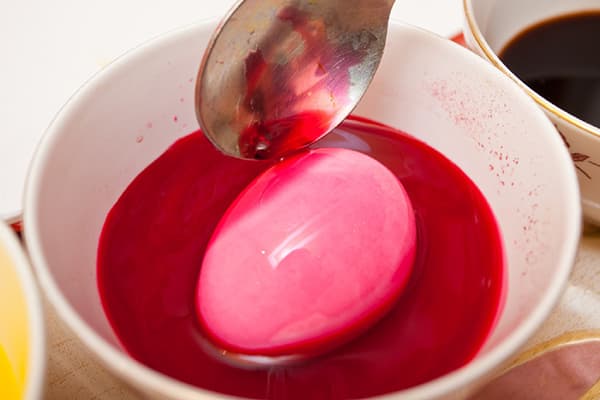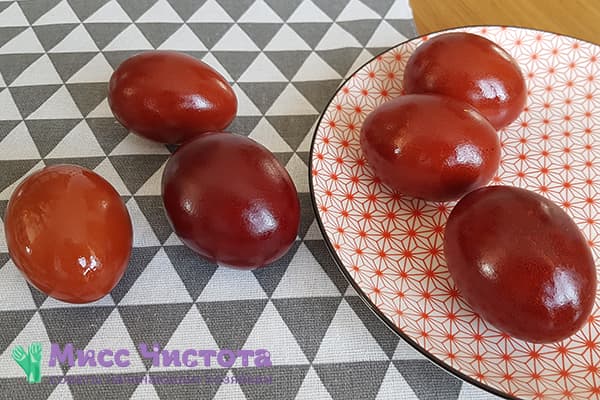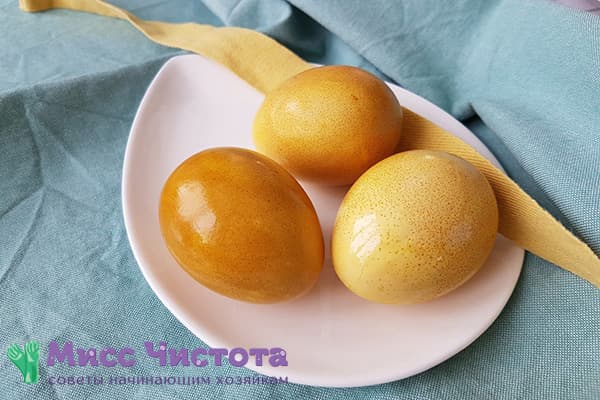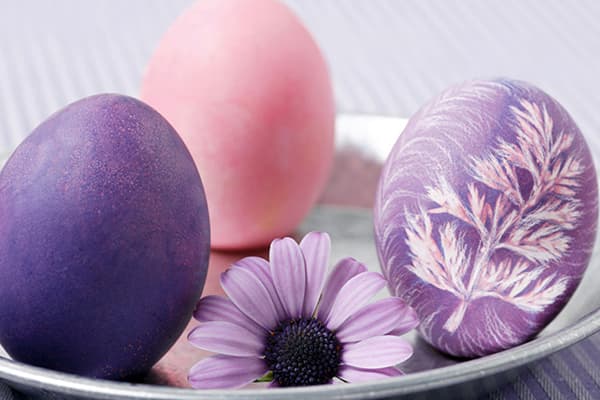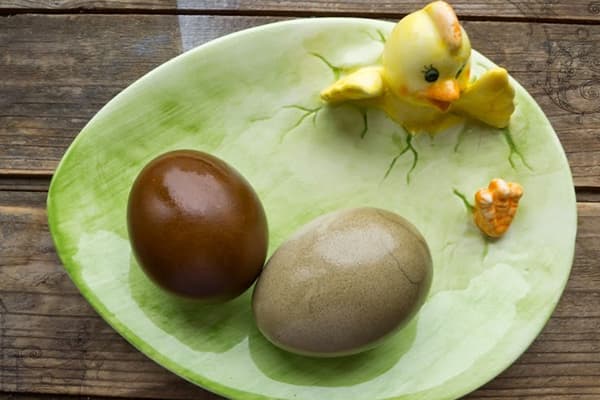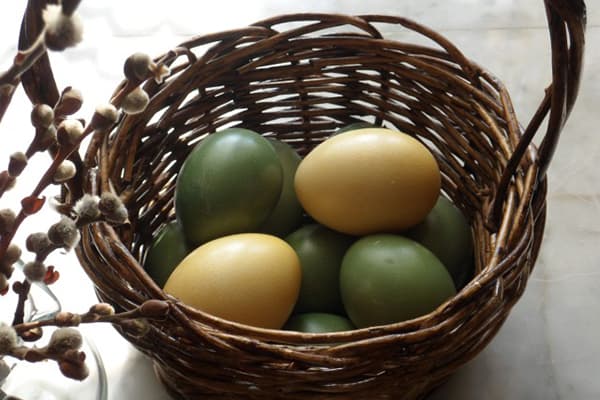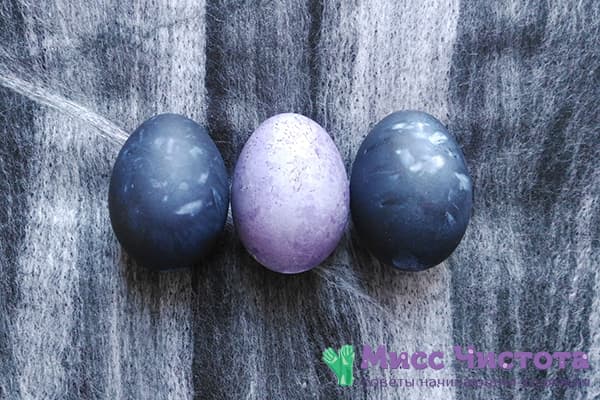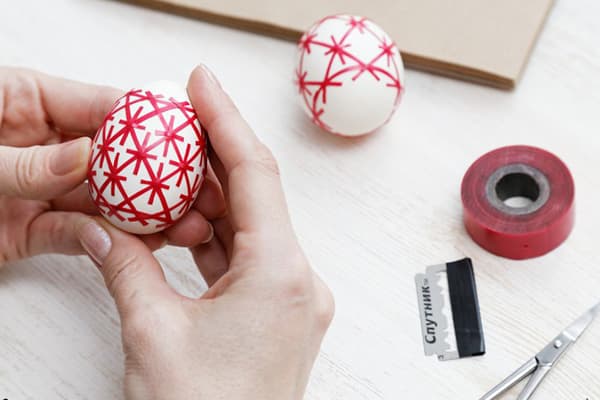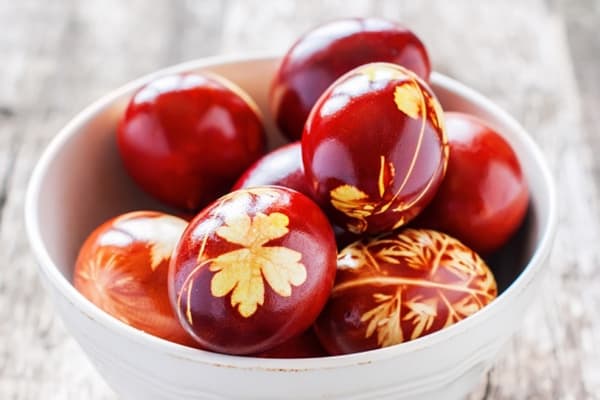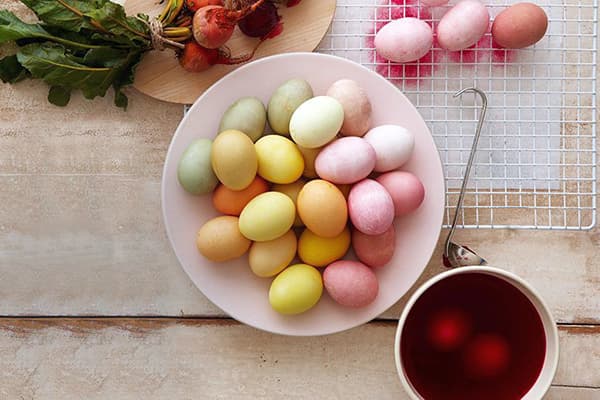We dye eggs for Easter with natural dyes without chemicals
Content:
Before Easter, believers traditionally begin preparing the festive table, the central decoration of which is colored eggs. Multi-colored, with fancy patterns, “marble” and with stickers paints are usually given as gifts to friends and relatives. Ignoring the store-bought assortment of food dyes, which are often hazardous to health or cause allergies, most housewives prefer to use natural ingredients to color eggs. Beautiful, bright and varied shades, which, moreover, are completely harmless for children and adults, can easily be obtained from the correct use of ordinary beets or turmeric. Painting eggs for Easter with your own hands without dyes is a simple task, but it can launch an exciting creative process.
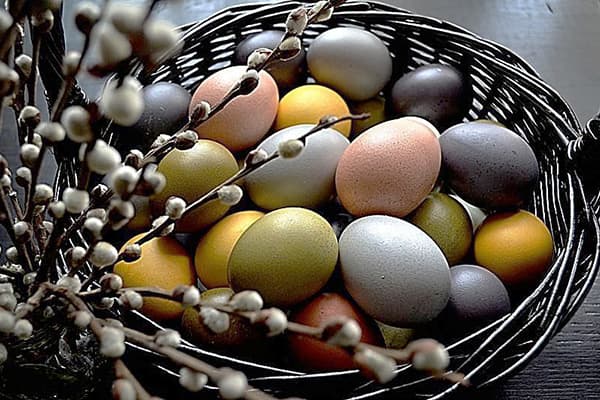
Cooking Easter eggs
Natural dyes are plant products that contain pigments that can “share” their color with the egg shell.So, for natural coloring they use, for example, onion peelings, red beets, carrots, paprika and turmeric, decoctions and infusions of berries and herbs.
Mostly, the painting procedure takes place simultaneously with the cooking of the coloring component and eggs. However, ready-to-eat eggs can be soaked in a prepared colored solution - usually from half an hour to a day.
Rules for working at home
When working with any natural dye, it is important to follow a number of simple rules. One of them is that predominantly white eggs should be used. Only in this case is it possible to obtain a rich, beautiful and undistorted color.
The second rule is that it is important to prepare the eggs well before painting. Despite the fact that the technologies may differ (in one case you need to place already boiled eggs in the coloring liquid, in another you need to boil them in it), at the very beginning each egg should be washed and degreased. To do this, just wipe the shell with a cotton pad soaked in vinegar or alcohol.
We control both before and after
Before boiling, eggs must be properly processed by leaving them on the kitchen counter for several hours or heating them in warm water. Adapted to the ambient temperature, they most likely will not crack during heat treatment, which means pigment will not leak inside. The water where the eggs will be boiled should be salted. We calculate: for every liter of water, 1–1.5 tablespoons of salt will be used.
It is not recommended to rub already colored testicles with a towel - they should be rinsed with running water at room temperature and then gently blotted with napkins. After all, to give the eggs a shine, you can rub the shell with vegetable oil and polish with a dry cloth.
Natural dyes for eggs
Almost any color can be given to the shell using pigments that nature itself gave us. Some components are always available in any kitchen, while others may turn out to be unexpected solutions.
Pink and red – we paint eggs with beets
It is a well-known legend that the chicken egg turned red when Jesus was reborn, which is why this color is the main one on the Easter table. You can get this shade if you use fresh beets. It should be grated or chopped with a blender and poured with a small amount of water. Next, you need to add 1 teaspoon of vinegar to the resulting liquid and cook for 15 minutes. Hard-boiled eggs should be placed in a cup with beet juice. After 2-3 hours, the eggs will turn pink, and if you keep the egg in this solution all night, the shell will turn burgundy. Other options are to cook beet juice with eggs or grate the juice onto an egg.
If you boil eggs in cranberry juice, the eggs will turn a rich pink color.
Decoctions of berries such as blueberries, currants, elderberries or raspberries can give the shells a pink-burgundy, pink-violet, lilac color. It would be good to keep the eggs in such liquids all night.
Red-brown is the leader in popularity
One of the top natural pigments used at home is onion peel. We are used to seeing such eggs at Easter - they have a pleasant red-brown color, the saturation of which, by the way, is determined by the number of peelings.
The onion peels must be washed, pour boiling water and cook for about 30 minutes. Then add salt and add eggs to the onion broth. It is better to cook the dyes for at least another 10-20 minutes.
Yellow and orange – turmeric
If you want to get the original yellow color of the shell, eggs are painted with turmeric. To do this, add spices to a deep saucepan at the rate of 2–4 tablespoons per 1 liter of water. The more turmeric, the deeper and richer the shade. Boil. Boiled eggs need to be kept in a saucepan with seasoning for 30 minutes. The color will be deeper and juicier if you add grated fresh carrots to the composition.
Another seasoning, paprika, can work wonderfully as an orange natural dye for eggs. For 3 glasses of water you need to take about 10 tablespoons of paprika. Boil the prepared solution for 30 minutes, then place the prepared boiled eggs in it for 30 minutes.
The yellow color of the shell is also given by a decoction of birch leaves, which will be just in time for the Easter celebrations this spring, as well as lemon or orange zest, carrot juice and walnut shells. Eggs should be boiled in these solutions until cooked.
Lavender – we use grapes
Eggs must be hard-boiled. Then the cooled testicles need to be sent for painting in red grape juice. The result will be a delicate lilac color of the shell.
Beige and brown - tea or coffee
A light brown color can be obtained by boiling the dyes in instant coffee or strong tea leaves. Vinegar can add durability to the shade. After coloring the eggs, it is recommended to leave them in the broth in the refrigerator overnight, in which case the color will become even deeper and more definitive.
Colored with brilliant green, spinach and nettles
Very unusual and spectacular eggs are obtained if you paint them in green, which is traditionally present in every home.To do this, one or more bottles of brilliant green should be dissolved in a small amount of water, sufficient to submerge the egg, depending on the desired result. Place the egg in the resulting liquid and leave for 30 minutes. Zelenka is a completely safe pharmaceutical product.
Spinach juice can also give eggs a green color. To do this, chop fresh greens (about 150 grams), squeeze out the juice, add half a liter of cold water and immerse eggs in this liquid. Bring to a boil and cook for 10–15 minutes.
Nettle will provide an interesting green color to eggs. In this case, even dried herbs, which are sold at the nearest pharmacy, will do. This dyeing method is completely harmless and environmentally friendly. Dry or fresh nettle leaves should be placed in a saucepan with water and boiled for 20 minutes. Cool and strain the liquid. Place the eggs in the container and boil for about 15 minutes. The dyes will take on an olive tint.
Paint it blue
You can use red cabbage to get blue shells. The heads of cabbage should be finely chopped, pour half a liter of cold water over the cabbage, and add 6 tablespoons of 9% table vinegar. Place the eggs in the solution for 12-16 hours. As a result, they will turn an interesting blue color.
About the same shade, but a little paler - closer to sky blue - gives the eggs strong hibiscus tea. Tea leaves should be brewed to create a concentrated dark drink. And then put boiled eggs in it. Be prepared for the fact that small pimples may appear on the shell, since the liquid is highly acidic.
We decorate eggs with unusual designs and ornaments
- To get specks on an egg, you need to moisten it with water, roll it in rice or millet, wrap it in a nylon bag (you can use old tights) and place it in this form in a dye solution. Specks will be imprinted on the shell.
- You can stick any improvised stencil of adhesive tape onto the shell - it will protect this area from staining. In this way you will get eggs with drawings.
- You can put several rubber bands on each egg in any order. After staining, the testicle will be dotted with chaotic stripes.
- A pattern in the shape of leaves and flowers can be achieved using traditional greenery. A natural stencil is applied to the surface of the egg, secured with a piece of nylon and the resulting “bag” is dipped into the coloring solution.
- Eggs with a lace pattern look original: openwork shreds should be attached to the egg and painted in the above manner. Instead of lace, you can wrap a bandage, twine or net around the egg - you get chaotic or even stripes.
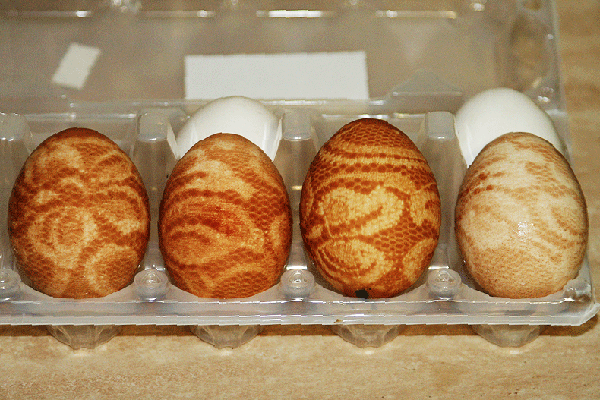
Useful tips
- To ensure an even color, eggs should be selected without roughness.
- It is better to paint with gloves - then the eggs will be protected from hand marks, and your hands will be protected from unnecessary staining.
- To enhance the color saturation, it is better to refrigerate the solution overnight.
Of course, the use of natural dyes in most cases deprives us of the opportunity to obtain rich and bright shades, which chemical additives are guaranteed to provide, but they are absolutely safe for health, so such dyes are not only a souvenir, but also a full-fledged holiday dish.Traditionally, eggs are painted on Maundy Thursday, and a colored egg is a talisman and the best Easter gift for close friends and relatives.
